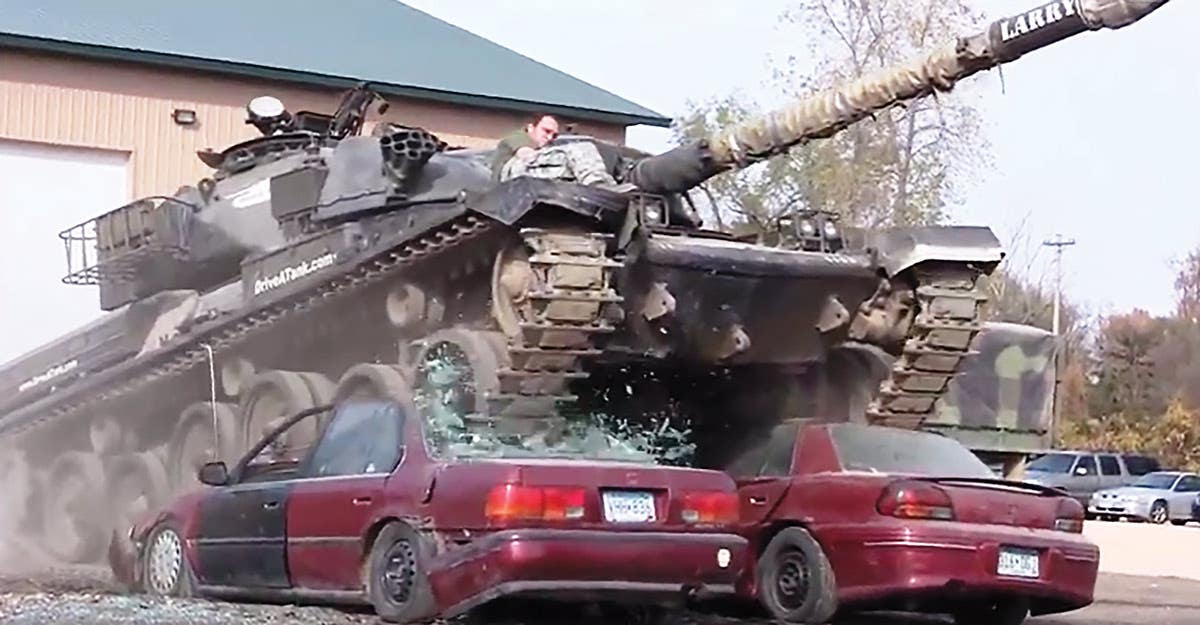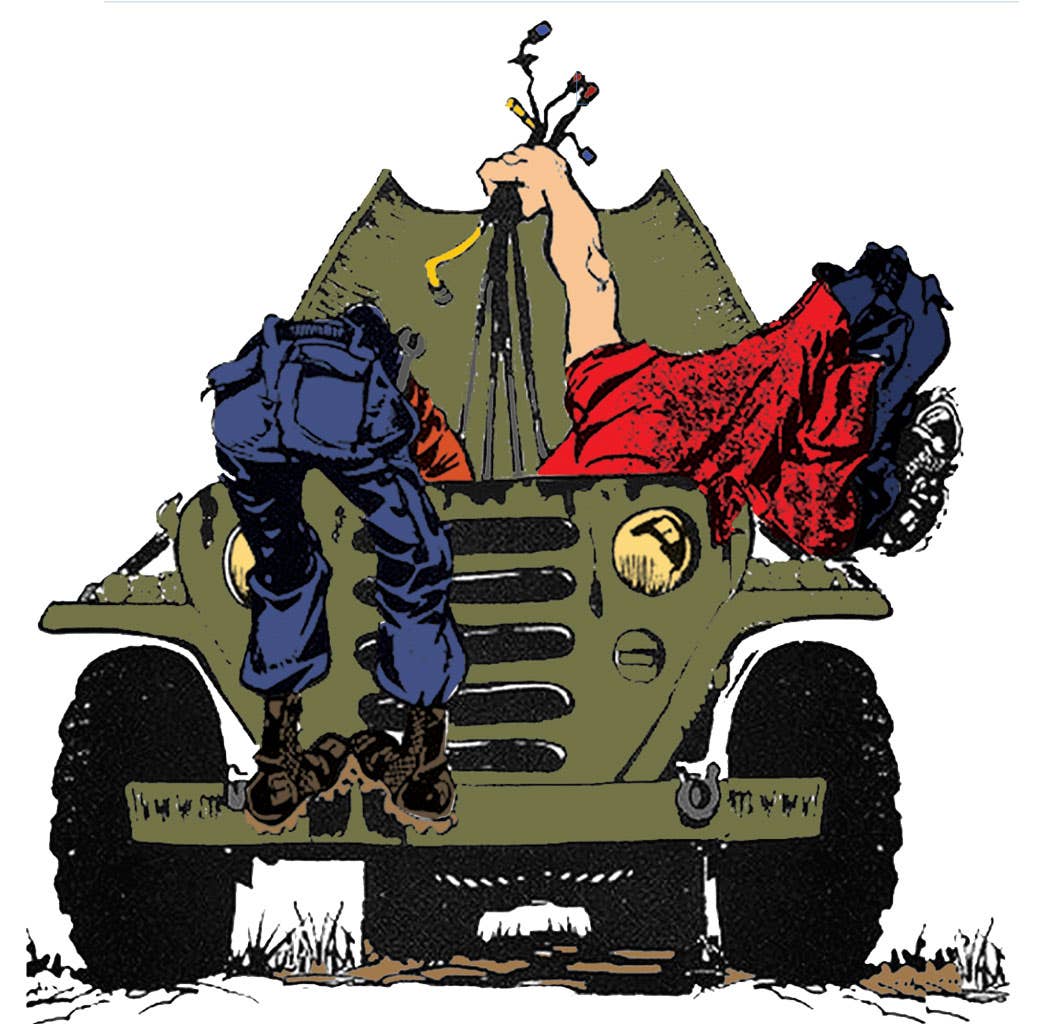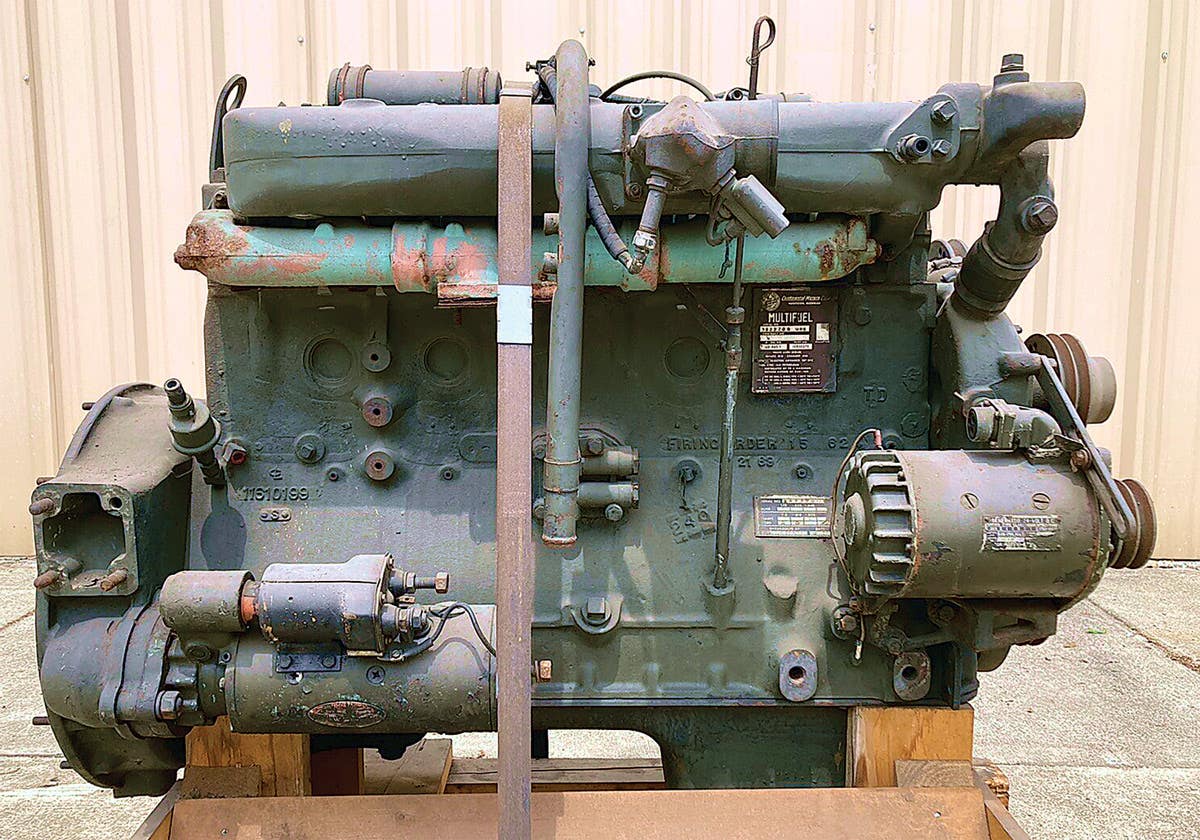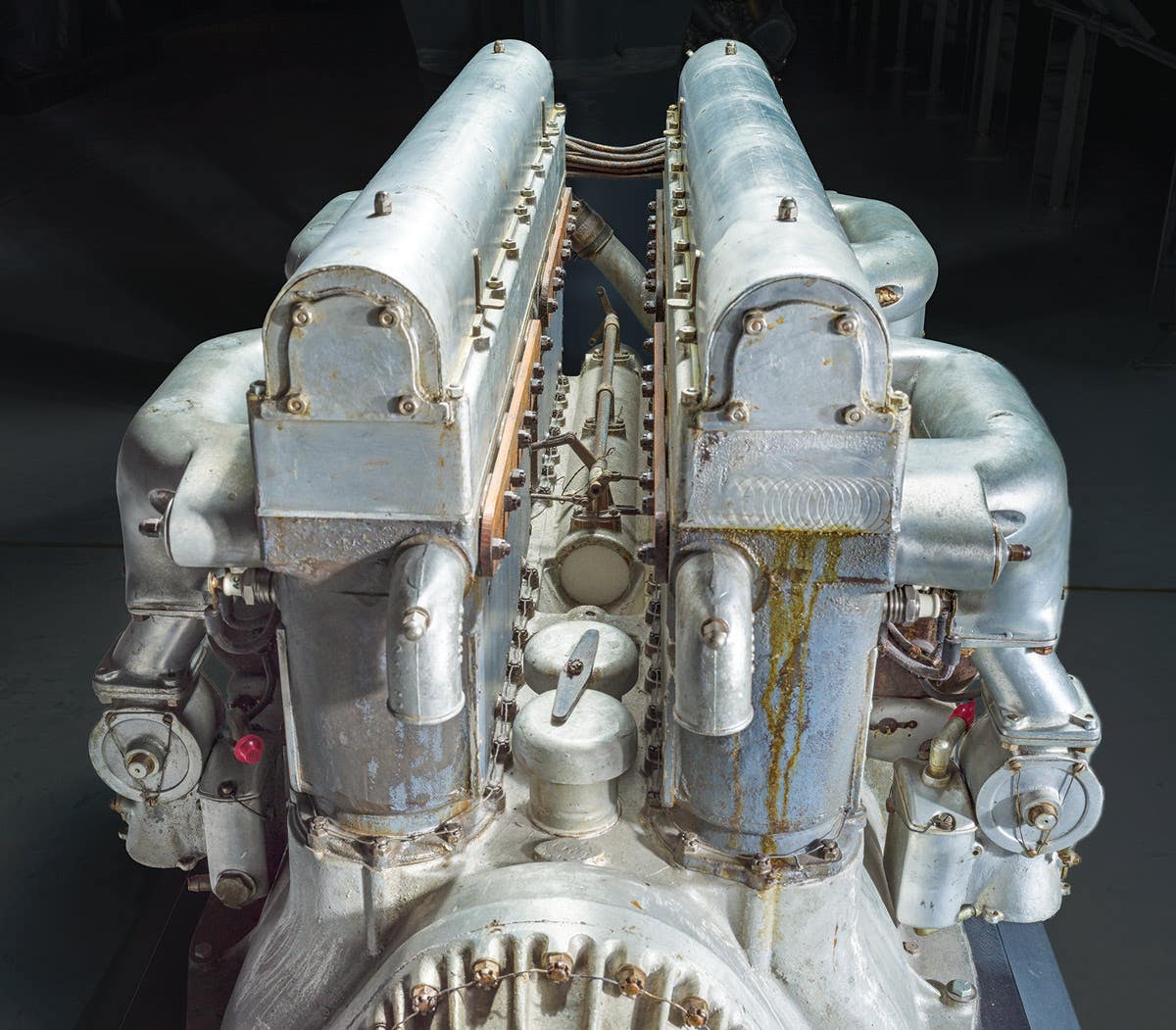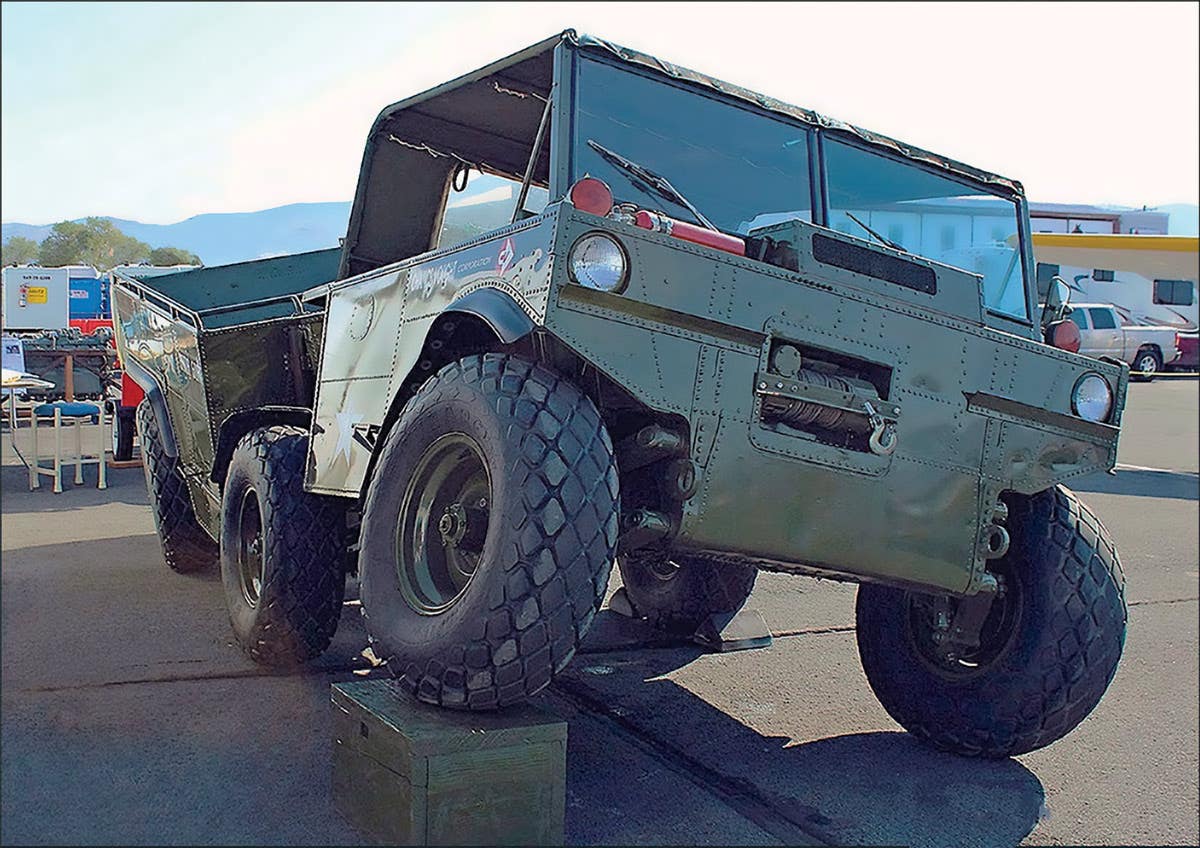Headlight illumination, Otter work, MUTT Mags, shift levers in this installment of Tech Tips
Something not right with your historic military vehicle? Steve Turchet answers your questions on how to keep ’em movin’!
Follow-up To Headlight Help
Q: Lowell replied: I checked circuit 16 (light switch to dimmer) and there was no power. I connected circuit 16 to circuit 17 (dim-mer to headlights) and there were no headlights. I installed a new dimmer switch and hooked all of the circuits up as they are supposed to be. No headlights. As I see it, the problem is in the wire (#16) from the switch to the dimmer. Do you have any other ideas? Again, it sounds as if you have logically traced the problem.
A: Have you tried running a hot wire to the dimmer switch to see if that gives you headlights? If doing that does give you lights, then it would seem you’re not getting power from the light switch to the dimmer switch. The next step would be to check if you’re getting power to the harness wire (16?) out of the light switch — as you seem to have already done. If not, is the problem in the light switch (which you said you replaced) or in the wire harness plug that connects to the light switch, or in the wire (16?) itself? What about the plug that connects to the dimmer switch? Are you getting power to the dimmer switch out of it? If the problem is the wire harness plug to the light switch, or the plug to the dimmer switch, it might be a bad connection. That would seen to indicate the replacement harness was defective. If the problem is in the wire, you could simply run a new wire from the light switch plug to the dimmer switch plug and save the work and expense of installing a whole new harness.
That Otter Work
Q: I “barn found” an M76 “Otter” in almost perfect shape, but the fabric of the tracks has rotted from sitting so long. The road wheel tires are also rotten. It’s frustrating to have the unit in running condition but can’t drive it. I have checked lots of military vehicle parts dealers and none of them have otter tracks. It seems like the fabric is basically conveyor belt. Do you think I could make new tracks from conveyer belt? What about the tires? Except for not having tread they seem to be ordinary car tires. — Tom
A: The fabric part of otter tracks was indeed conveyer belt material of the heavy duty type as used to convey ore and other rough materials. If you feel up to the task mechanically and financially, you otter be able to make new tracks for your otter. I suggest consulting conveyor belt manufacturers to find the most suitable material. After taking careful measurements, you may even be able to have the bands custom made. The connecting joints are the most critical part, so it might be best to have this done professionally. As far as the road wheel tires, you can use regular automobile tires of the same size. While they don’t have to be bald, they don’t need tread, so a moderate highway tread would probably be best. You should use bias rather than radial type tires. Finding any replacement parts for an Otter is hard, so treat yours with TLC.
MUTT Mags?
Q: I was told that some early M151s had magnesium or aluminum wheels. Is this true? And would they be correct for my 1967? — Ken
A: Most early production MUTTS had steel wheels, but with fewer holes than late model wheels. In an attempt to lighten MUTTs for air transport, the military ordered “mag” wheels in the late 1950s and tried them for several years. While they were lighter than the steel wheels, they were also prone to corrosion and cracking, so the military switched back to steel wheels — with more holes — around the mid-1960s. While your `67 wouldn’t have come from the factory with mags, it’s possible that “boneyard mags” could have been installed — though more likely only one as a spare wheel — so on this basis you could still call them “correct” for your vehicle.
Less frustration
Depending on the type of vehicle, installing the two shift levers on a Dana/Spicer 18 transfer case with the case in the vehicle can be a frustrating process because of the anti-rattle springs — especially if you’re working from underneath. This job can often be make easier by using electrical tape to securely tape the springs to the levers — using the pivot shaft to align them — before trying to install the levers. Use a knife or razor blade to remove the tape.
Which way did they go?
Q: I am a Vietnam vet and had a lot of experiences driving MUTTs, that included one rollover. Like you said in your HMV Glossary, most guys called them “jeeps” but I always figured that was a tradition from WWII and Korea. I was able to buy a M151 last year, uncut and in pretty good shape. Taking your advice I also bought a manual. I did a brake job last week and saw the star adjusters were installed backwards from what the manual shows. They seem to work OK this way and the backing plates have two slots so they can be installed either way. Does it make any difference?
—Ron Johnson
A: In most cases the adjusters can be installed either way, though the correct position, as your manual illustrates, is with the stars facing the front of the vehicle. This allows easier access on some MUTTS, and the stars will turn in the “right” direction when making brake shoe adjustments.
Send your favorite Tech Tip or question to Steve Turchet at military@aimmedia.com
Looking for more Tech Tips? Here are a few more articles for your reading enjoyment.



